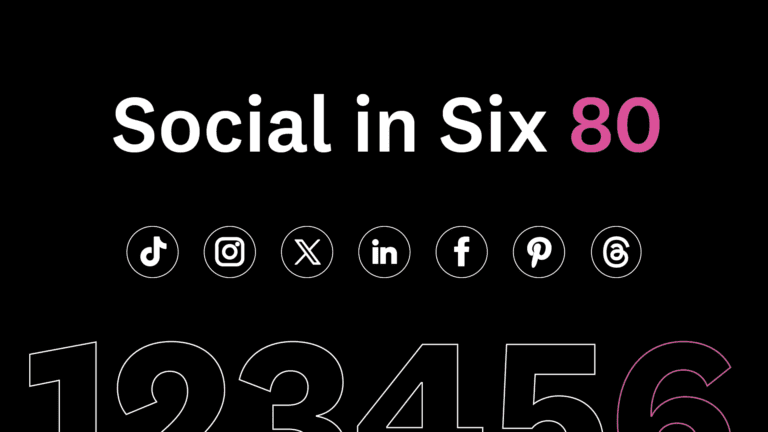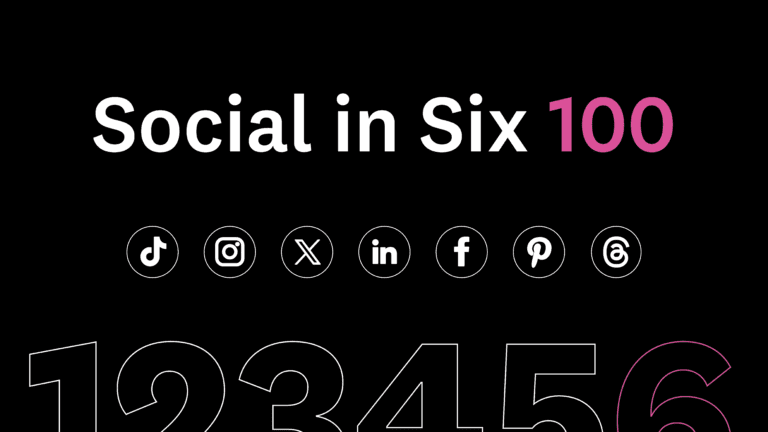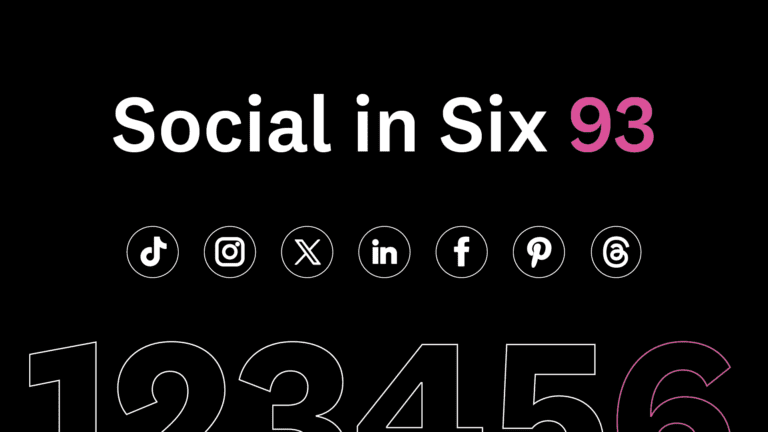Social in Six 99
1. Meta is testing an app without ads – for a price
The story:
- After launching in the EU in November 2023, Meta is offering UK users an ad-free version of Facebook and Instagram for a monthly fee of £2.99 per month on the web or £3.99 per month on mobile.
- The subscription removes ads and tracking for subscribers, marking a shift towards user-funded models.
- The feature is currently being rolled out over the coming weeks across the UK.
So what?
Let’s be real – this isn’t going to fundamentally change your Meta advertising strategy. The European rollout showed less than 1% of users opted for ad-free, and we’ll likely see similar adoption in the UK. Your audience is still there and addressable.
But think of this as a reminder not to put all your eggs in one basket. Diversify now – strengthen your organic content, invest more in influencer partnerships, build community connections, and explore other platforms. Meta’s paid advertising isn’t going anywhere soon, but brands that hedge their bets now will be much stronger if the landscape shifts down the line.
2. Instagram is testing opening the app to the Reels feed
View on Threads
The story:
- Instagram is testing a version of the mobile app in India that opens directly into the full-screen Reels feed instead of the home feed, mimicking the experience of Instagram’s recently launched iPad app.
- It’s also playing around with the order of tabs. While the Home feed remains the first tab, the test replaces Search with the Reels feed as the second tab, and makes the central tab the DM inbox instead of the Create tool. It’s opt-in, so users can switch back to the default whenever they choose.
- Adam Mosseri says the change is because Reels and DMs have been key drivers of growth in recent years.
So what?
Instagram is chasing the data here – Reels and DMs are driving growth – but they might be missing what users actually want from the platform. People still come to Instagram to connect with friends, brands and creators they care about, not just endless discovery scrolling.
But here’s the opportunity: audiences, especially younger ones, are increasingly interacting privately – sharing content in DMs and group chats rather than posting publicly. If Instagram doubles down on this direction, brands need to create content that’s designed to be shared privately – things people actually want to send to their friends. Start testing content that sparks those one-to-one conversations now, because that’s where engagement is happening.
3. Pew Research reveals YouTube and Facebook are key platforms for news consumption
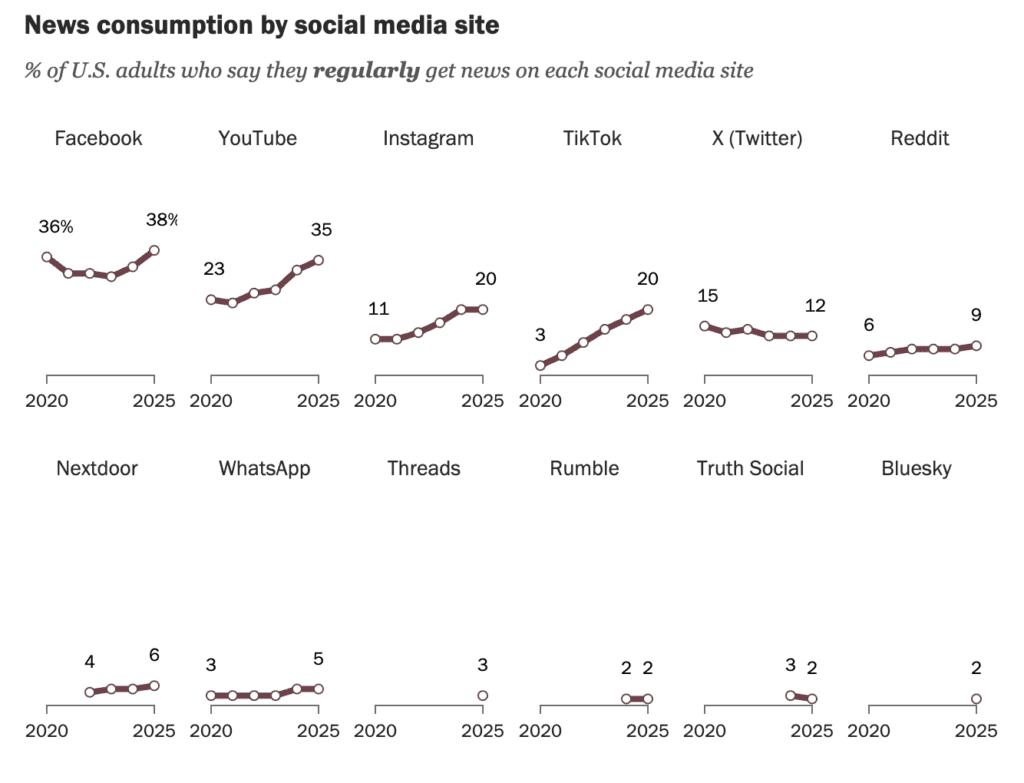
The story:
- A new Pew Research report shows Facebook (38%) and YouTube (35%) remain the top platforms for news amongst US adults, with TikTok and Instagram (both 20%) rapidly gaining ground.
- One in five U.S. adults now say they regularly get their news from TikTok, up from just 3% five years ago. Of the 20% of US adults surveyed who said they regularly get news from TikTok, 43% of those were 18-29 years old.
- The findings come as TikTok secures a U.S. buyer in a landmark deal to maintain its operations under American ownership.
So what?
On the surface, this isn’t shocking. But here’s what should concern us: Facebook is simultaneously testing an AI-generated feed called “Vibes” for creating and sharing AI videos. Think about the implications – platforms where millions get their news are now experimenting with AI-generated content at scale.
For brands, this creates a responsibility to be incredibly thoughtful about transparency. Especially when you consider Facebook’s older demographics who may be vulnerable to misinformation. Focus on credibility and clear sourcing, because in a world of AI-generated content, real human storytelling will be your biggest differentiator.
4. TikTok is testing Travel Ads
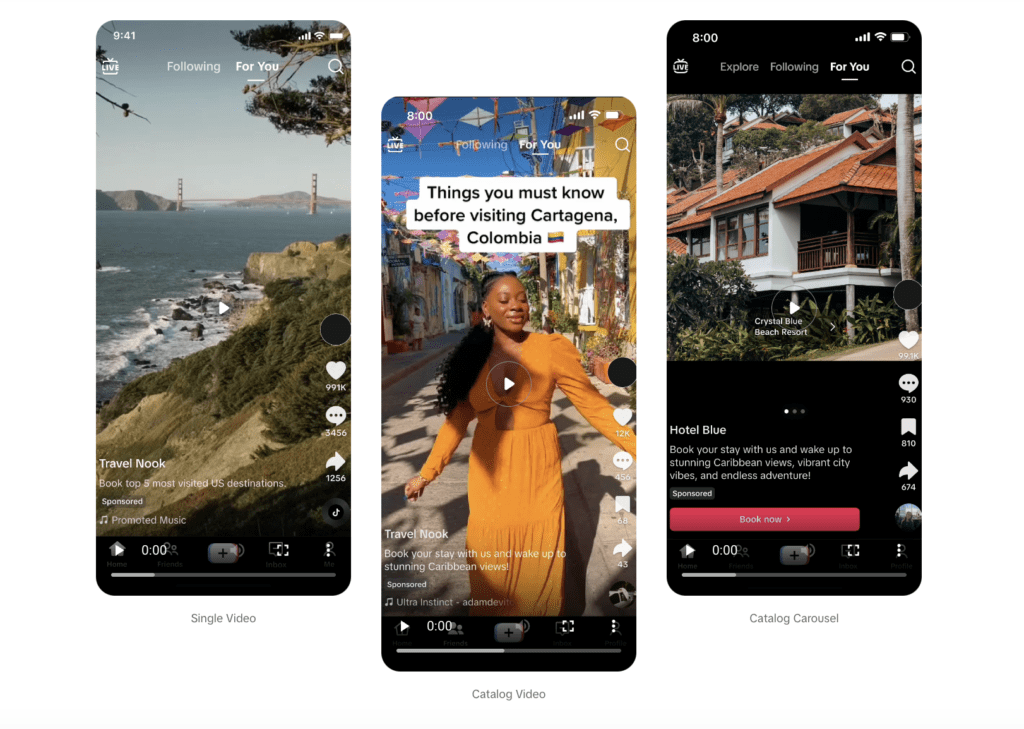
The story:
- TikTok has launched Travel Ads, built specifically for travel advertisers who want to reach users based on travel intent and interests.
- The Smart+ targeting feature uses AI to optimise creative and serve catalog-based ads, which are available in three formats: Single Video, Catalog Video, and Carousel (Single Video).
- Each Travel Ad features a clickable travel card with relevant information such as hotel name and ratings, pricing, flight information, and discounts.
- Travel cards are built using details from the catalog and appear two seconds after the video ad starts playing. They support up to 10 cards (in the Single Video format) and auto-slide every four seconds.
So what?
We know users are already planning trips and discovering destinations on the platform – now TikTok’s giving travel brands the tools to actually convert that behaviour.
The Smart+ AI targeting means you’re meeting people in discovery mode with shoppable content. But here’s the key: your creative still needs to inspire first. These cards appear two seconds in, so your video has to grab attention and build desire before the functional details kick in – and then you can let the AI handle the rest.
5. Facebook has introduced TikTok-like keyword search suggestions for Reels
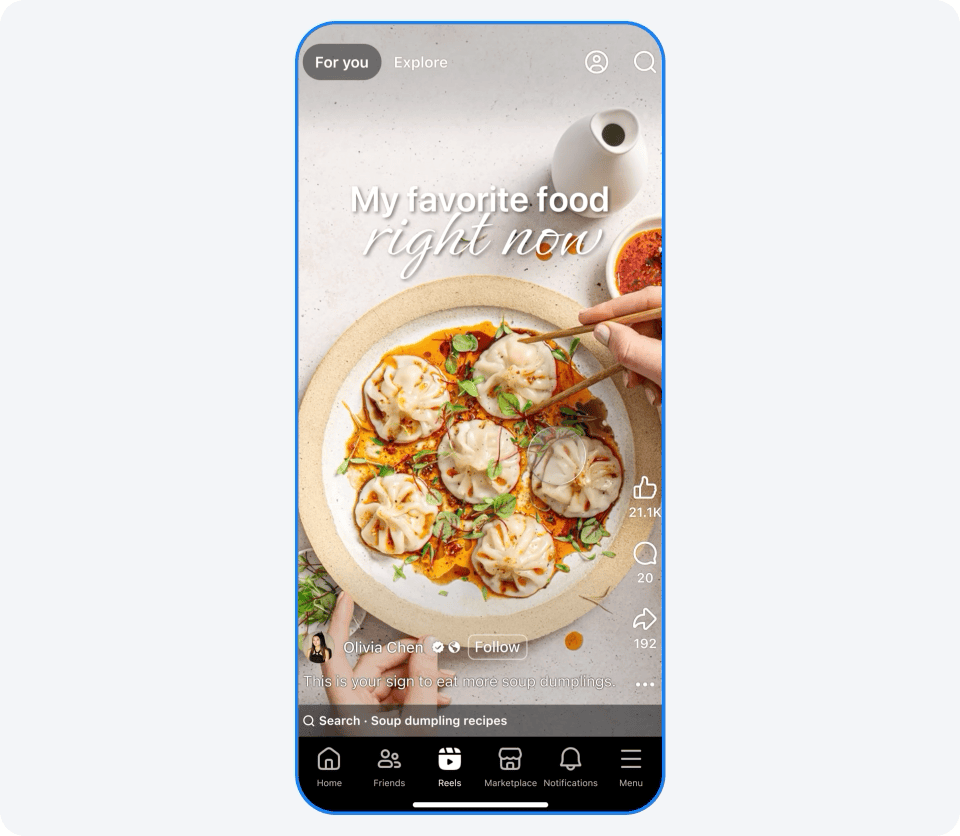
The story:
- Facebook is rolling out keyword suggestions in its Reels search, helping users discover trending topics more easily.
- The feature mirrors TikTok’s search UX, surfacing suggested terms related to popular creators and trends. When users tap the keyword suggestion, they’ll be taken to the Search page displaying Reels related to that search term.
- Facebook has also added “friend bubbles” to show which friends have liked a Reel, similar to the feature Instagram launched last month.
So what?
Facebook is finally catching up to TikTok’s search experience, and that changes how content gets discovered. Those keyword suggestions make it easier for users to fall down content rabbit holes – which means search optimisation is now critical for Facebook Reels too.
For brands, this means you need to think like a search engine. Use clear, trending keywords in your captions, on-screen text, and even spoken audio. What are people actually searching for in your category? Test keywords in descriptions, monitor what’s trending in your space, and create content that answers the questions your audience is searching for.
6. YouTube is working on an AI tool that generates alternative endings for Shorts
The story:
- YouTube is developing an experimental feature called Extend with AI, which uses AI to create alternate or expanded endings for Shorts based on a selection of premade prompts.
- The tool will allow users to remix other creators’ Shorts or their own with this feature and post the remixed Shorts as a new piece of content.
- YouTube says that Extend with AI will be gradually rolled out to all countries outside of the E.U. and U.K. “over the coming months.”
So what?
YouTube is democratising content creation, but not in the way we might hope. Yes, it lowers barriers for camera-shy creators or those without set ups and equipment, but it also opens the floodgates to low-effort AI slop.
For brands, this is a double-edged sword. The remix culture could extend your content’s reach, but users will eventually tire of generic AI videos. Use AI as a tool to enhance production, sure – but don’t let it replace the honesty that builds trust.

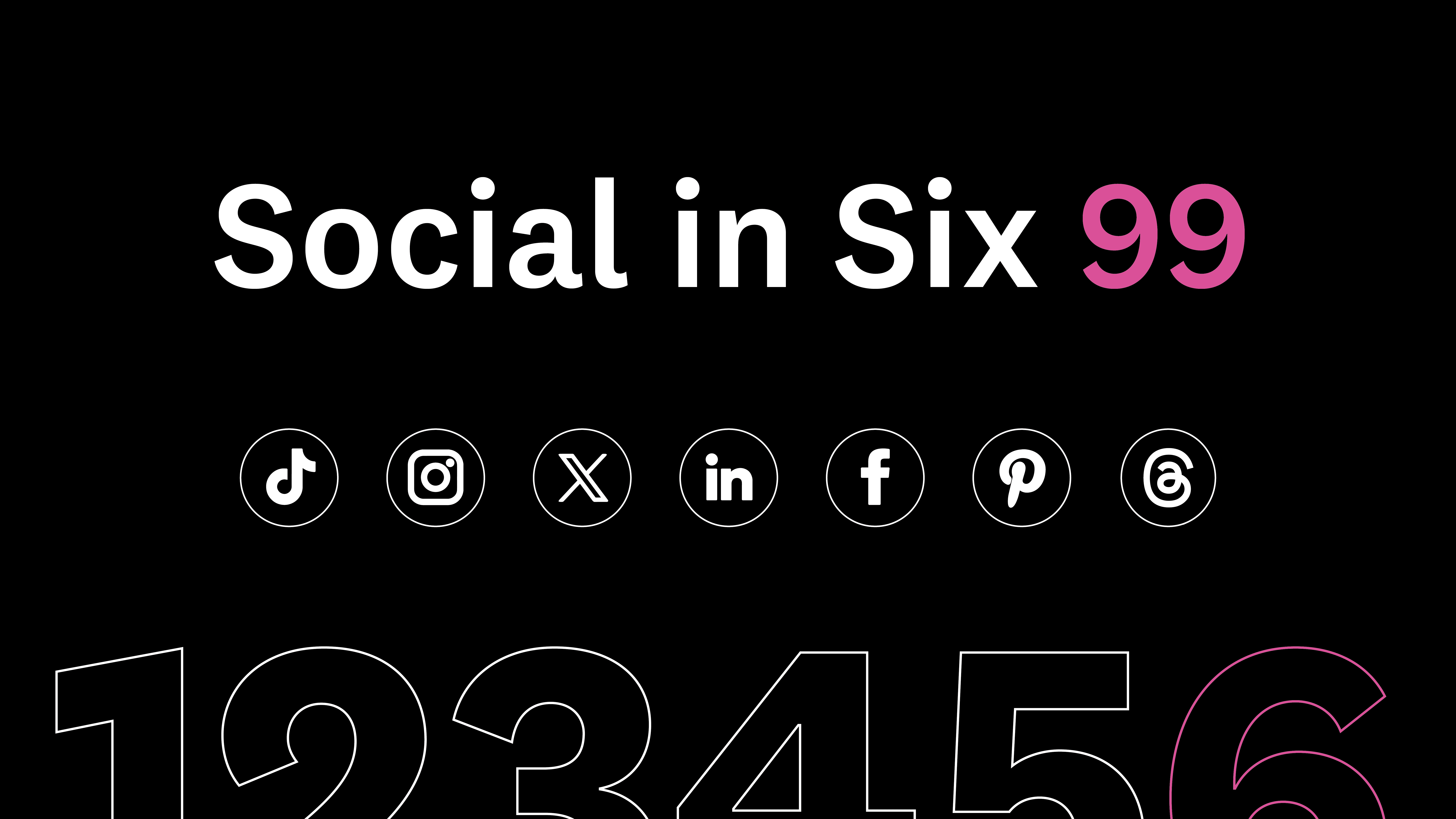
![SOCIAL IN SIX [099]](https://www.socialchain.com/wp-content/uploads/2025/09/SocialMinds-Podcast-Artwork-scaled.jpg)


